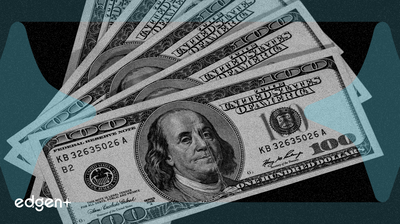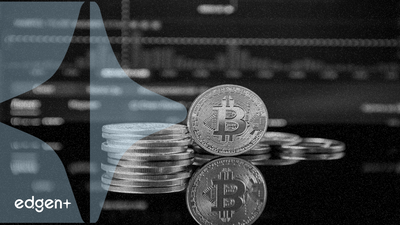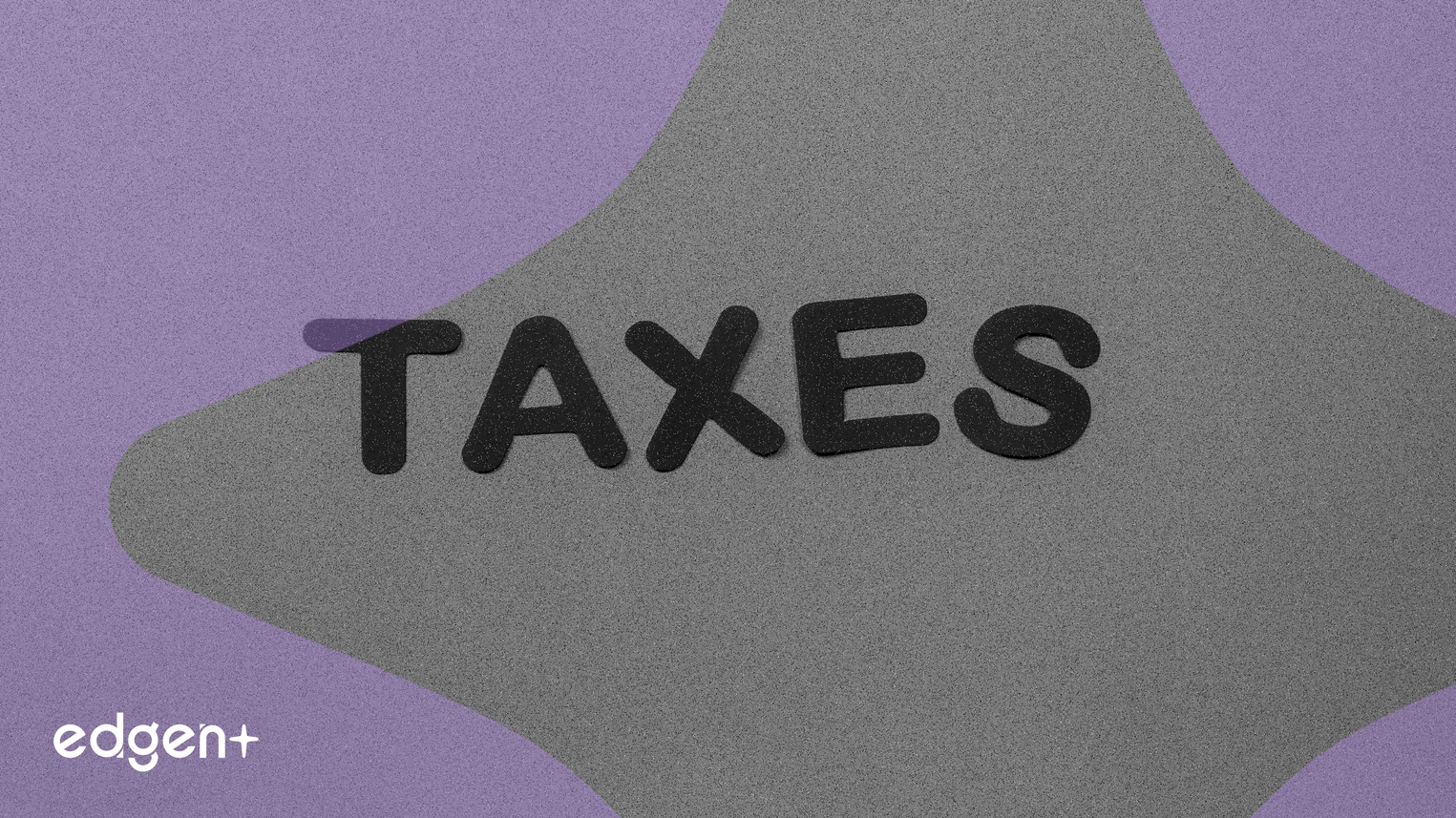Related News

Federal Reserve Governor Milan Signals Dovish Shift, Citing Stablecoins' Influence on Neutral Interest Rates
## Executive Summary Federal Reserve Governor Milan has advocated for a more dovish monetary policy, including potential interest rate cuts, citing recent economic data and the significant influence of stablecoins on the neutral interest rate. Milan’s assessment highlights weakening labor market data and better-than-expected inflation figures as primary drivers for a policy shift. He specifically points to the proliferation of stablecoins as a factor that could depress the neutral interest rate, or "r-star," by up to 0.4 percentage points, suggesting that current interest rates may be excessively tight. ## The Event in Detail Speaking to economists in New York, Federal Reserve Governor Milan stated that economic data received since the Federal Reserve's September policy meeting supports a "dovish stance." He noted that "inflation data has been better than we expected" and that labor market data has "weakened." This assessment aligns with reports of the US JOLTS Job Openings data coming in lower than expected at 7.181 million. Governor Milan elaborated that the growing adoption of crypto tokens linked to the US dollar, specifically stablecoins, is poised to depress what economists refer to as the "r-star," or neutral interest rate. Citing previous research, he indicated that stablecoin growth could reduce the Federal Reserve's benchmark interest rate by 0.4 percentage points. Milan emphasized that stablecoins are already increasing demand for US Treasury bonds and other dollar-denominated liquid assets from non-US buyers, a demand he expects to continue growing. He declared, "Stablecoins could become an elephant worth trillions of dollars in central bankers' rooms." This additional supply of loanable capital in the economy is expected to depress neutral interest rates. Milan concluded that if neutral interest rates decline, the Federal Reserve "needs to lower policy interest rates to avoid dragging down economic growth," suggesting a federal funds rate around 2% would be appropriate if the neutral rate is around 0.5%. ## Market Implications A more dovish monetary policy from the Federal Reserve, characterized by interest rate cuts, is generally interpreted as a bullish signal for risk assets, including cryptocurrencies. Reduced interest rates typically increase liquidity in financial markets and lower borrowing costs, which in turn can boost investor risk appetite. Following the release of lower-than-expected US JOLTS Job Openings data, **Bitcoin (BTC)** price experienced a jump of over 2%, trading at $111,825, while **Ethereum (ETH)** surged more than 2%. Furthermore, a weakening US dollar, often a consequence of falling interest rates, can nominally strengthen assets priced in dollars, such as **BTC**. However, market sentiment remains susceptible to fluctuations in Fed policy. Around November 14, 2025, a perceived hawkish stance by the Federal Reserve led to a significant downturn in the cryptocurrency market. During this period, **BTC** experienced a sell-off, declining between 5.62% and 6.55% in a 24-hour period, pushing its value below the $100,000 mark to a six-month low of approximately $95,000 to $97,000. This decline was attributed to diminishing expectations for a December rate cut and notable whale selling, with long-term holders offloading over 815,000 **BTC** in the preceding month. Data from Coinbase-owned crypto exchange Deribit indicated a surge in demand for downside protection in derivatives markets, particularly for protective puts below the $100,000 strike price. ## Expert Commentary Federal Reserve Governor Milan's remarks provide a key expert perspective on the intersection of monetary policy and digital assets. His assertion that "all the data we have received points to a dovish stance" underscores the justification for potential policy adjustments. His detailed analysis of stablecoins' impact on neutral interest rates integrates this emerging financial instrument into core macroeconomic considerations, highlighting its growing influence on traditional financial frameworks. ## Broader Context Governor Milan's focus on stablecoins and their potential to depress the neutral interest rate reflects a growing recognition within traditional financial institutions of the systemic relevance of digital assets. This discussion positions cryptocurrencies not merely as speculative instruments but as factors influencing fundamental macroeconomic variables. The ongoing interplay between inflation data, labor market health, and the Federal Reserve's policy decisions continues to be a critical determinant for both conventional financial markets and the broader crypto ecosystem, leading to periods of both strategic opportunity and pronounced volatility.

Cardone Capital Launches Hybrid Real Estate-Bitcoin Fund with $235 Million Property
## Executive Summary Cardone Capital has initiated a hybrid investment fund, integrating a $235 million multifamily property with a $100 million Bitcoin allocation. The strategy involves reinvesting the property's rental income, estimated at $10 million annually, into further Bitcoin acquisitions. The firm aims for a public listing, framing the fund as a "digital asset treasury" backed by tangible assets and consistent cash flow. ## The Event in Detail Real estate investor Grant Cardone's firm, Cardone Capital, has expanded its multifamily housing fund strategy by pairing traditional commercial property with Bitcoin allocations. The company recently launched its fifth commercial multifamily investment property, a 366-unit complex purchased for approximately $235 million. A significant portion of this fund, $100 million, has been specifically allocated to Bitcoin (BTC). The objective is to combine the low volatility, tax benefits, income generation, and stable value of real estate with the growth potential inherent in Bitcoin. ## Financial Mechanics and Strategy The core financial mechanism of this hybrid fund involves utilizing the net operating income from the real estate asset to continuously acquire more Bitcoin. The property is projected to generate approximately $10 million in net operating income annually, which will be directed toward increasing the fund's Bitcoin holdings. This approach aims to create a continuous buying mechanism for BTC, leveraging the stable cash flow from real estate to mitigate Bitcoin's inherent volatility while capitalizing on its long-term appreciation potential. Strategically, Cardone Capital intends to take this fund public, converting it into shares that trade as a public company. Grant Cardone stated that this public entity would function similarly to "digital asset treasuries" but with the distinction of possessing "a real product, a real asset, real income, real tenants, real customers," and "free cash flow." This differentiates the model from pure digital asset holding companies by grounding it in a revenue-generating operational business. ## Market Implications This innovative hybrid fund model from Cardone Capital could establish a new precedent for asset allocation, potentially drawing interest from a wider investor base in both traditional real estate and cryptocurrency markets. The integration of consistent real estate income for ongoing Bitcoin accumulation provides a sustained demand mechanism for BTC. Should this model demonstrate success, it may encourage traditional Real Estate Investment Trusts (REITs) and other institutional investors to explore similar strategies, diversifying their portfolios with digital assets. The potential public listing of such a blended entity could further expand pathways for institutional participation in the broader Web3 ecosystem, bridging conventional finance with digital assets. The current market environment, characterized by rising institutional investment and a cautiously optimistic outlook in late 2025, with Bitcoin trading above $124,000, suggests a receptive landscape for these novel financial products. ## Broader Context The Cardone Capital initiative aligns with an evolving regulatory and investment landscape for digital assets. Regulatory advancements, such as the SEC's "Project Crypto" in July 2025, have streamlined the approval process for crypto ETFs, accelerating institutional adoption. Notably, BlackRock's iShares Bitcoin Trust (IBIT) accumulated over $52.3 billion in assets within its first year, marking it as a highly successful ETF launch. Such developments underscore a growing appetite for accessible digital asset exposure and a trend toward integrating cryptocurrencies into established financial frameworks. The increasing sophistication of financial products, coupled with significant institutional inflows, signals a maturing market where hybrid models like Cardone Capital's can find traction and potentially drive further innovation.

Tether Explores €1 Billion Investment in Neura Robotics, Signaling Strategic Diversification
## Executive Summary Tether, the issuer of the **USDT** stablecoin, is reportedly in advanced discussions to invest approximately €1 billion in the German robotics firm **Neura Robotics**. This potential funding round would value **Neura Robotics** between €8 billion and €10 billion. The move signals a significant strategic pivot for **Tether**, as it continues to diversify its investment portfolio beyond its core stablecoin operations and into emerging technology sectors such as artificial intelligence and robotics. This initiative is supported by Tether's robust financial performance, which generated over $10 billion in net profit during the first three quarters of 2025. ## The Event in Detail The proposed investment involves **Tether** leading a funding round in **Neura Robotics**, a company focused on the development of cognitive humanoid robots for practical, real-world applications, including industrial use. This investment follows Neura Robotics' previous funding success in January, where it raised nearly $140 million from investors including BlueCrest, C4 Ventures, Lingotto, and Volvo Cars Tech Fund. For **Tether**, this engagement aligns with its stated strategy over the past year to diversify into AI infrastructure, robotics, and other real-world technology ventures. Its "Hadron by Tether" platform has already established agreements with KraneShares and Bitfinex Securities to promote the adoption of tokenized securities. ## Market Implications This potential investment by **Tether** in **Neura Robotics** underscores a significant evolution in the stablecoin issuer's strategic direction. It demonstrates a clear intent to allocate substantial capital, derived from its profitable stablecoin operations, into high-growth technology sectors outside of the traditional cryptocurrency ecosystem. With net profits exceeding $10 billion in the first three quarters of 2025 and substantial financial reserves, including $6.8 billion in excess reserves and approximately $135 billion in U.S. Treasuries, **Tether** possesses the financial capacity to pursue such large-scale diversification. This move could influence broader market sentiment by legitimizing the deployment of crypto-generated profits into innovation across other industries and may encourage other Web3 entities to explore similar corporate diversification strategies. ## Expert Commentary Market observers note that **Tether's** investment in **Neura Robotics** aligns with its ambition to become a prominent player in the broader technology landscape. This strategic deployment of capital reflects the growing financial power of stablecoin issuers and their increasing integration into the global economy. The investment highlights a trend where crypto-native companies, leveraging their substantial financial resources, are actively seeking to participate in and shape technological advancements beyond their foundational blockchain activities. This signifies a maturation of the cryptocurrency sector, moving beyond purely digital asset-focused ventures to impact tangible technological innovation. ## Broader Context **Tether's** foray into robotics is part of a broader diversification strategy that has seen the company expand its interests significantly. Previously, **Tether** has invested in **Bitcoin** mining operations across various countries and has extended approximately $1.5 billion in credit to the commodities sector, particularly for energy financing. The company launched "Tether Ventures" in July, an initiative that utilizes **Tether's** balance sheet to back technology startups focused on decentralization, payments, AI, and energy, with investments in over 120 companies to date. This approach differs from models like MicroStrategy's, which primarily focuses on accumulating **Bitcoin** as a treasury asset. Instead, **Tether** is leveraging its considerable profitability and reserves, which include approximately $9.9 billion in **Bitcoin**, to acquire stakes in and fund other technology companies, thereby expanding its influence and operational footprint across multiple strategic sectors, including securing access to a 20,000-GPU compute network for its AI research environment.
